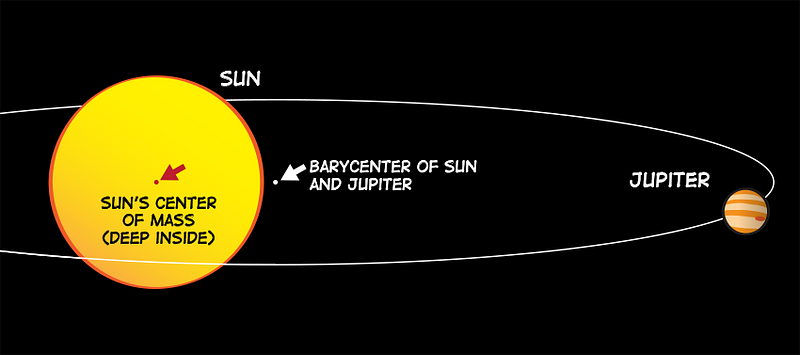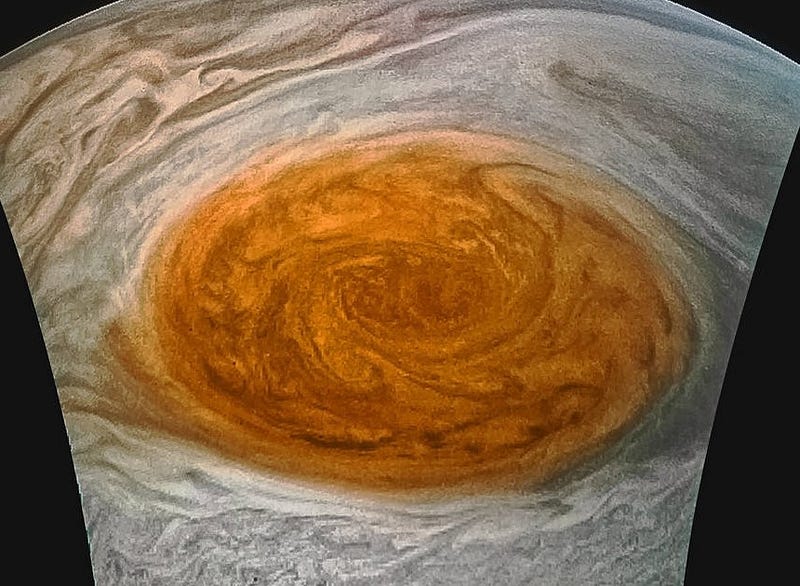Exploring Jupiter: The Colossal Gas Giant of Our Solar System
Written on
Chapter 1: Introduction to Jupiter
Jupiter stands out as the most massive planet within our Solar System and is recognized as the second brightest object in the night sky.

Planet Jupiter (Image Credit: NASA)
Our home, Earth, orbits an average-sized star known as the Sun, located about 150 million kilometers away. This star, along with eight planets and various other celestial bodies—including moons, asteroids, and comets—constitutes the Solar System. This system resides in the Orion Arm of our Milky Way galaxy.
The planets that orbit the Sun are Mercury, Venus, Earth, Mars, Jupiter, Saturn, Uranus, and Neptune. Notably, Earth is the only planet capable of supporting life, while the other planets play crucial roles in maintaining the conditions necessary for life on our planet. Among them, Jupiter serves as a significant protector for Earth. With a volume more than 1,300 times that of Earth, it is the largest planet in our Solar System and is visible to the naked eye.
Galileo Galilei, an Italian astronomer, was the first to observe Jupiter in January 1610, during which he also discovered its four largest moons: Io, Europa, Ganymede, and Callisto, now known as the Galilean moons.

Galileo Galilei (1564–1642)
Jupiter ranks as the fifth planet from the Sun and holds the title of the largest in our Solar System, boasting a mass of approximately 1.898 × 10²⁷ kilograms and a radius of 69,911 kilometers. Unlike Earth, Jupiter lacks a solid surface and experiences the most extreme weather conditions of any planet, with storms comparable in size to those on Earth.
Hydrogen and helium constitute around 90% of Jupiter's mass. Its immense gravitational pull causes both Jupiter and the Sun to orbit a shared point in space known as the barycenter.

Both Jupiter and the Sun revolve around a common point called Barycenter. (Image Credit: NASA)
The atmospheric pressure on Jupiter is so extreme that no probe or spacecraft has successfully traversed it. Jupiter boasts a total of 79 confirmed moons, resembling a miniature solar system. The four Galilean moons—Io, Ganymede, Europa, and Callisto—are particularly notable.
Jupiter's sheer size allows it to potentially engulf nearly all the planets within our Solar System, still leaving space for more. The Great Red Spot, a massive anticyclonic storm in Jupiter's atmosphere, could easily accommodate the entire Earth.

Jupiter’s Great Red Spot (Image Credit: NASA)
The tidal forces exerted by Jupiter create various geological activities on its moons. Notably, after the Sun, Jupiter possesses the most powerful magnetic field in the Solar System, approximately 20 times stronger than Earth's. This magnetic field has posed challenges for the Galilean probe, generated by electric currents in Jupiter's core and extending as far as Saturn's orbit on the opposite side.
Chapter 2: The Formation and Characteristics of Jupiter
Jupiter formed around 4.3 billion years ago when gravity drew together swirling gas and dust to create a massive ball of gas, leading to its classification as a gas giant. The materials that coalesced to form Jupiter, along with other planets, originated from the Solar Nebula—a disk-shaped cloud of gas and dust that remained after the Sun's formation.
Since its creation, Jupiter has continued to gain mass from space debris. It is often referred to as a "failed star" because it did not accumulate enough mass to ignite nuclear fusion in its core, the process that powers stars. In fusion, lighter elements like hydrogen combine to form heavier elements such as helium or lithium, releasing vast amounts of energy in the process.
Subsection 2.1: The Galilean Moons
Io, one of the Galilean moons, is renowned as the most volcanically active body in the Solar System, featuring around 400 active volcanoes that eject lava up to 100 meters high into space. Its surface is thought to be almost entirely covered in lava.
Callisto, the second-largest moon of Jupiter and the third-largest moon in the Solar System, is characterized by numerous craters on its surface, giving it a dull appearance. Ganymede, the largest moon of Jupiter and the biggest moon in the Solar System, uniquely possesses a magnetosphere, likely formed from convection in its liquid iron core.
Europa, the smallest of the Galilean moons and the sixth-largest moon overall, features a thick icy crust and has a surface temperature of -171 degrees Celsius. The cracks on Europa's surface are attributed to the intense gravitational forces exerted by Jupiter.
Explore the smallest and largest planets in our Solar System through this insightful video, which highlights their unique characteristics and roles.